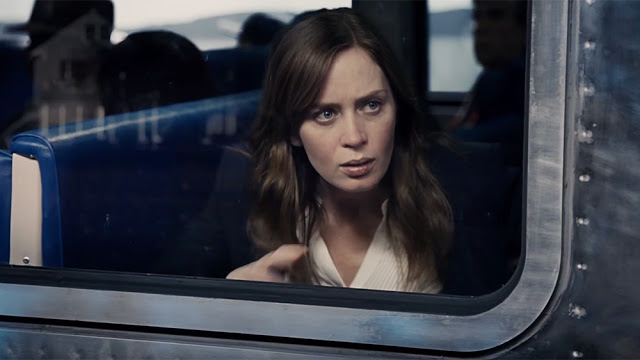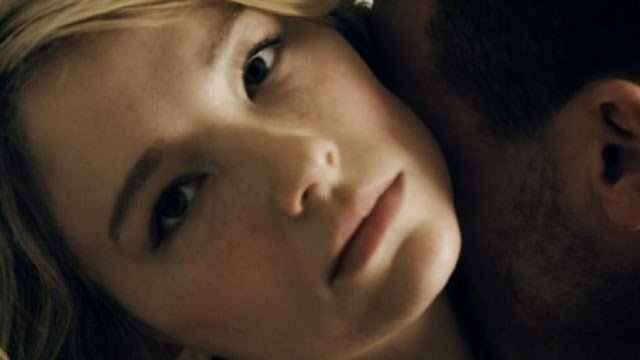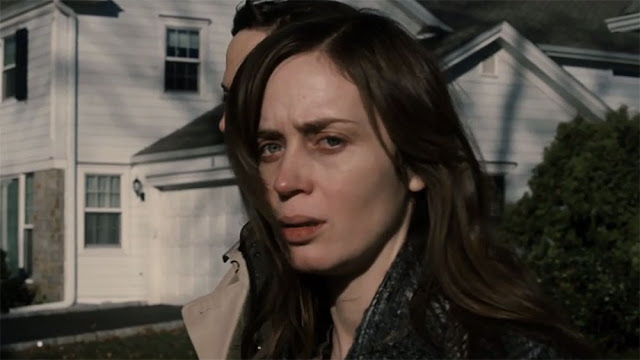The key test for any whodunit is whether it would still be compelling if you already knew the answer. Sure, the closing reveal in Psycho is legendary, but that shower scene is terrifying regardless of the identity of that knife-wielding woman. (For a more recent example, the least interesting element of The Night Of was the (apparent) confirmation of the actual murderer; the show was far more powerful as a tragic character study and a virulent examination of our justice system.) The “who” in “whodunit” is secondary—what really matters is the how and, more importantly, the why. With one singular exception, The Girl on the Train fails this test. It is so preoccupied with drawing out its central mystery that it never invests that mystery with any real resonance. As a result, its ultimate resolution is unlikely to inspire anything beyond the simple recognition of, “Oh, that’s who done it.”
This is especially curious, given that the majority of this film’s viewers will enter the theater already armed with the answer to its central question. Directed by Tate Taylor (The Help) from a screenplay by Erin Cressida Wilson, The Girl on the Train is based on the best-selling novel by Paula Hawkins, a book that scratched the melodramatic itch of millions of fans of suspense literature, whether railway commuters or otherwise. Given that Taylor can’t pull the rug out from under the feet of readers who have already fallen to the floor, you might think that he would attempt to create a different hook. Instead, he appears to have faithfully—at times ploddingly, at times bracingly—transmuted the novel to the screen, fashioning the film as a persistent guessing game. The Girl on the Train functions as a sort of murderous Whack-a-Mole: Everybody is a suspect, no one can be trusted, and as soon as you peg one character as the culprit, another more likely candidate pops up. Was it the wife? The shrink? The guy in the suit (who is literally credited as “Man in the Suit”)? Who knows?
Well, readers do, and I count myself lucky that I am not among them. Make no mistake, I am not impugning the quality of Hawkins’ prose sight unseen; I am simply imagining how tedious Taylor’s blunt-force adaption must be to those viewers who are already acquainted with the novel’s twist-and-turn narrative. Yet I, having the good fortune to approach such lurid material untainted by foreknowledge, found myself engaged by its herky-jerky plotting and surprised by its numerous reveals. Many consumers of popular art savor the experience of watching a beloved literary property play out on screen with music and moving pictures—I enjoyed this movie precisely because I haven’t read the book.
Regardless of your familiarity with the source, The Girl on the Train gets off to a rickety start, with Taylor bouncing between his main characters in a manner that feels less clever than haphazard. It doesn’t help that, while the movie unfolds from the perspectives of three different women, only one of them is interesting. That would be Rachel (a fantastic Emily Blunt), a divorcée who commutes from the suburbs to Manhattan for an unspecified job, all the while guzzling vodka from her water bottle. Her route takes her past her old house, where her ex-husband, Tom (Justin Theroux), still lives with his new wife, Anna (Rebecca Ferguson, wasted following her electric turn in last year’s Mission: Impossible sequel). Rachel is still licking her wounds from the divorce, but she’s less interested in Tom than in Megan (Haley Bennett, and gentlemen, please control yourselves), the beauty who lives next door. Megan is married to Scott (Luke Evans), and she serves as Tom and Anna’s nanny, but she’s disenchanted with both her marriage and her job, leading her to start seeing an impossibly good-looking therapist (Édgar Ramírez).
Got all that? Taylor makes sure you do, in a clunky opening act that gracelessly juggles screen time for his three characters, throwing in some extraneous voiceover just to make things crystal-clear. It’s hard to blame him for wanting to orient his audience, but he’s a poor stylist, and the relentless exposition only reinforces the flatness of his images and the sloppiness of his editing. A single outlier—a sudden flashback where we see Rachel briefly kidnapping Tom and Anna’s baby, her figure shrouded in fog, looking at once maternal and hostile—hints at Taylor’s desire to craft The Girl on the Train as an unsettling paranoid thriller along the lines of Gone Girl, but that comparison is as flawed as it is inevitable . Even setting aside the two films’ significant structural differences—where The Girl on the Train prolongs its mystery for as long as possible, Gone Girl‘s big twist arrived early and then forced viewers to stew in an ominous universe that reverberated with darkness and moral rot—Taylor simply lacks David Fincher’s directorial verve. He just wants to keep the train running on time.
He mostly does that, growing more comfortable once The Girl on the Train shifts into a distorted police procedural. One night, an agitated and particularly inebriated Rachel follows Megan into a dimly lit tunnel, only to wake up hours later at home with blood on her face and fear in her heart. Suddenly, the cops (in the form of the always-welcome Allison Janney) are at her door, and wouldn’t you know it, Megan’s disappeared, and hey, wasn’t Rachel in the area that night?
It’s hard for her to say, and that uncertainty provides The Girl on the Train with a glimmer of genuine intrigue. Rachel’s blackouts render her the rare unreliable narrator who knows that she’s unreliable, and the movie acquires real tension as she races to discover not just what happened to Megan, but whether she’s responsible for it.
She finds out eventually, and more’s the pity. Taylor does a fine job delivering the film’s signature shock, but he follows that with an extended climax that’s both vulgar and oddly dull. I have no real objection to cinematic violence, but the brutality that concludes The Girl on the Train feels hacky and empty, possessing neither visual flair nor dramatic weight. (The exception is an awesomely gruesome moment in which a corkscrew gets twisted deliciously into a victim’s neck.) More problematic is the sluggish pacing; it’s one thing to drag out a murder mystery, but it’s quite another to continue delaying after the mystery has been solved. Once he’s finally assembled his jigsaw puzzle into a coherent picture, Taylor seems at a loss what to do next, which may explain why the film’s denouement is so pathetically limp.
And yet, The Girl on the Train is largely, improbably redeemed by one thing: Emily Blunt’s freewheeling, wildly entertaining performance. The British actress has proven gratifyingly willing to stretch her range in recent years, slyly chipping away at her charming persona with roles as tough-as-nails heroines in Looper, Edge of Tomorrow, and Sicario. But she’s never played someone as magnetically loathsome as Rachel, an alcoholic who makes stupendously bad decisions and alienates everyone around her. It’s a seemingly impossible needle to thread—Blunt has to make Rachel unlikable and sympathetic at the same time—but she pulls it off beautifully. Even burdened with that obnoxious voiceover, Blunt makes Rachel’s pain palpable without ever softening her jagged edges. It’s a bold, go-for-broke performance that singlehandedly saves the movie.
And even changes it. As clumsily workmanlike as The Girl on the Train may be as a thriller, it turns out to be a fascinating portrait of addiction and obsession. As someone who careens from one traumatic episode to the next, Rachel is thoroughly repellent but also profoundly sad, and Blunt invisibly articulates the deep-seated dread and self-loathing of a woman who is unable to trust herself. She can’t look herself in the eye, but she lets you see directly into her soul.
Jeremy Beck is the editor-in-chief of MovieManifesto. He watches more movies and television than he probably should.




